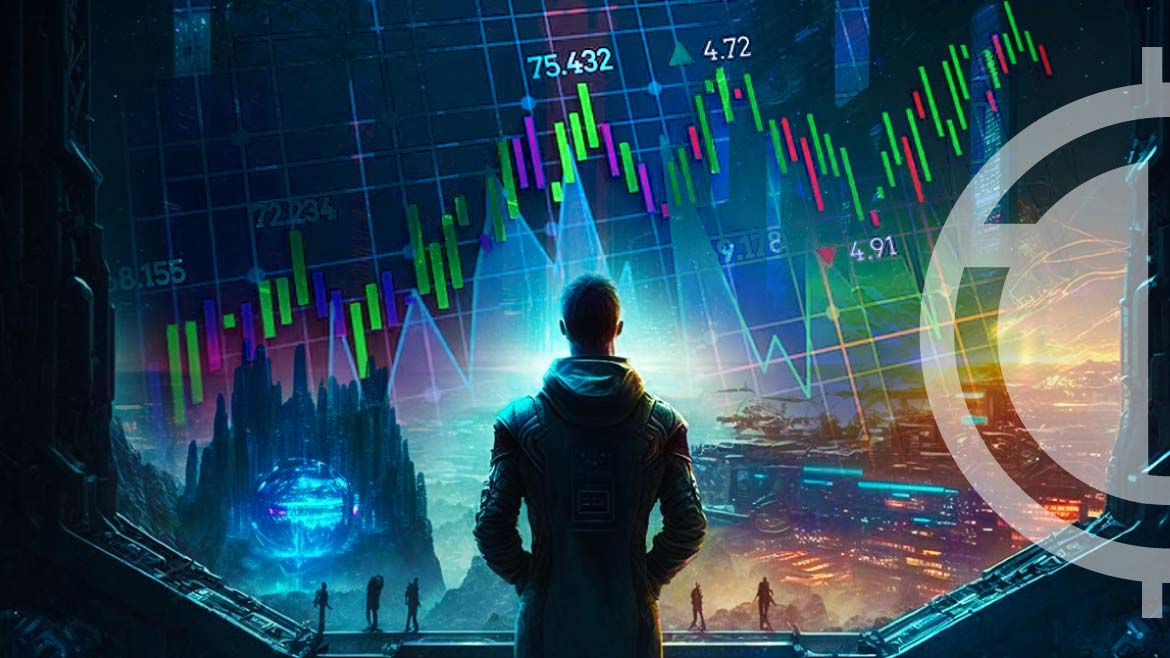
Cryptocurrencies are often subjected to volatility and pose a risk for traders. To successfully survive in the everchanging landscape and to realize your goals, you need to be aware of crypto indicators. Here are 10 must-watch indicators that will help you to predict the future trajectory of a digital asset.
10 Best Indicators For Crypto Trading
Moving Averages (MA)
Moving Averages, or MA, is one of the most commonly used crypto market indicators. It helps summarize the price action over a period of time, simplifying the process of identifying the direction of overall trends.
When it comes to Moving Averages, there are two main types:
- Simple Moving Average (SMA)
- Exponential Moving Average (EMA)
SMA is calculated by taking the closing prices of a coin and dividing it by the number of periods. It is more helpful for long-term traders because the changes in market trends take a lot of time.
EMA is calculated the same way as SMA, but it gives more preference to recent prices, making it more sensitive to price changes. It is useful for short-term traders.
If the price of an asset is above the Moving Average, it indicates an upward trend, while it is a downward trend if the price is below MA.
Average Directional Index (ADX)
Average Directional Index, or ADX, is a crypto technical analysis indicator used to measure the strength of a market trend. It is helpful in identifying opportunities for short-term traders because the higher the ADX, the stronger the momentum; likewise, the lower the ADX, the weaker the momentum.
The value of ADX can be anywhere between 0 to 100, but it rarely crosses 60. In most cases, if the ADX value is higher than 25, it implies a strong trend; if the value is below 20, it means no trend. ADX is calculated using,
ADX = MA [((+DI) – (-DI)) / ((+DI) + (-DI))] x 100
where:
+DI – Plus Directional Indicator
-DI – Minus Directional Indicator
Relative Strength Index (RSI)
Relative Strength Index, or RSI, is a momentum oscillator frequently used by traders to measure the changes in price movements to determine an asset’s health.
If the RSI of an asset is above 70, it indicates overbought momentum, and the price of the asset is likely to experience a downward trend. Alternatively, if the RSI is below 30, it signals an oversold momentum, and the asset’s price will likely go upward.
RSI is extremely useful in determining the upward and downward trend in a range-bound market, but when it comes to trending markets, it can give false signals. RSI is calculated using,
RSI=100-(100/1+RS)
Relative Strength (RS) is the average gain divided by the average loss over 14 days.
Fibonacci Retracement
Fibonacci retracement is a tool used by traders to identify potential resistance and support levels. The traders first determine the high and low points in the chart, and based on the Fibonacci sequence, they draw horizontal lines at levels 23.6%, 38.2%, 50%, 61.8%, and 78.6%. These levels represent the reversal areas in crypto price movements.
If the price retracts to the level of 23.6%, this can become a potential area of support for buyers to enter the market. If the price retracts to the 78.6% level, this becomes an area of resistance for sellers to enter the market.
Bollinger Bands (BB)
Bollinger Bands is a popular crypto market indicator trusted among traders to measure and identify periods of high volatility of tokens. It consists of three lines plotted around the chart, with one line in the middle representing the moving average and the other two (upper and lower band) representing standard deviations above and below the moving average.
If the price moves above the upper band, it means the crypto is being overbought, alternatively, when the price goes below the lower band, it is considered oversold. Bollinger Bands is calculated using,
Upper Band = Moving Average + (Standard Deviation * 2)
Lower Band = Moving Average – (Standard Deviation * 2)
Stochastic Oscillator
Stochastic Oscillator is one of the best crypto indicators for traders to identify overbought and oversold market conditions. It compares the closing price of an asset with a wide range of its own prices over a specified period of time. The oscillator comes with two lines, %K and %D, ranging from 0 to 100.
When the %K is over 80, it means the crypto is overbought, and if it is below 20, the crypto is oversold. Some traders also look for bullish and bearish signals. It is considered a bullish signal if the %k line crosses the %D line and a bearish signal when the %K line crosses below the %D line. Stochastic Oscillator is calculated using,
%K = (Current Close – Lowest Low) / (Highest High – Lowest Low) * 100
%D = 3-day SMA of %K
Moving Average Convergence Divergence (MACD)
Moving Average Convergence Divergence, or MACD, is a well-known crypto technical analysis tool used to identify trend reversals and momentum shifts. It calculates the difference between two moving averages to plot the MACD line and Signal Line on the MACD histogram to give a clear relationship between the lines.
If two MAs are moving apart, it indicates an increase in momentum and is viewed as a bullish signal. If two MAs are moving toward each other, it represents a decrease in momentum and is viewed as a bearish signal.
To put this in another way, if the MACD line crosses above the signal line, it implies a bullish signal; on the other hand, if the MACD line crosses below the signal line, it implies a bearish signal.
MACD line = 26 period EMA (Exponential Moving Average) – 12 period EMA (at closing prices)
Ichimoku Cloud
Ichimoku Cloud is a comprehensive technical analysis tool used by traders to gain insight into the direction of the trend, potential areas of support and resistance levels, and trading opportunities. It consists of five indicator lines that together form a cloud-like appearance on the chart. The indicators are:
- Base Line (Tenkan-sen)
- Conversion Line (Kijun-sen)
- Leading Span A (Senkou Span A)
- Leading Span B (Senkou Span B)
- Lagging Span (Chikou Span)
Each of these indicators has a separate formula,
Baseline = 26-PH+26-PL/2
Conversion line=9-PH+9-PL/2
Leading Span A=CL+ Base Line/2
Leading Span B= 52-PH+52-PL/2
Lagging Span= Close plotted 26 periods
Where,
PH = Period high
PL = Period low
CL = Conversion line
On-Balance Volume (OBV)
On-Balance Volume, or OBV, is a cumulative volume-based indicator used to measure the buying and selling pressure and determine potential trends. OBV is calculated by adding the volume on up days and subtracting the volume on down days.
A rise in OBV suggests buying pressure; a falling OBV indicates selling pressure. The difference in OBV and a token’s price is used to predict trend reversals.
If the price and OBV are heading in the same direction, it indicates a bearish market, and if the price and OBV are moving in a different direction, it signals a potential trend reversal.
Volume
Volume is a crypto market indicator used by traders to measure the strength of the market trend. It is calculated based on the amount of units of crypto traded over time.
If the volume is high, it means the token is highly active, and the possibility of a price increase is high. On the other hand, if the volume is low, it means the token activity is less, and the price is likely to go downward.
In a bullish market, if there is an increase in the volume of buying pressure during the upward movement, it signals a continuation of the trend, Conversely, during the upward movement, if there is an increase in the volume of selling pressure, it signifies a trend reversal.
Conclusion
Crypto traders need to scour through information, and indicators make it easier to get valuable info about the market conditions. Traders who understand and make use of the data obtained from the indicators can get better results than other traders. But you need to remember that the data is not omnipotent, so conducting a thorough analysis before making an investment decision is important.
To get the latest and detailed price analysis report on all major cryptocurrencies like Bitcoin, Ethereum, and Solana, follow CryptoTale.














